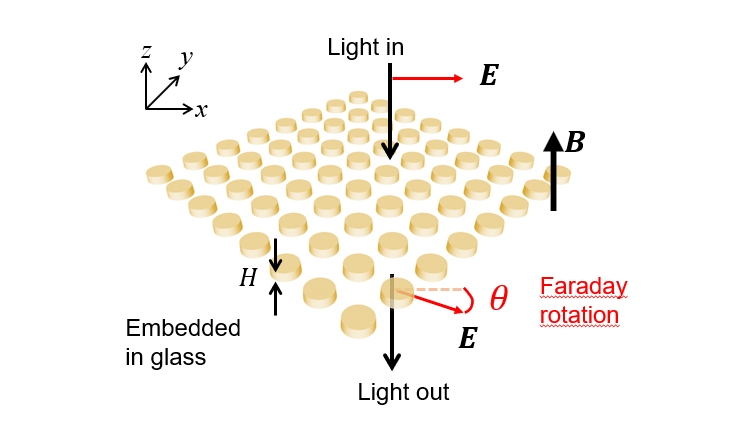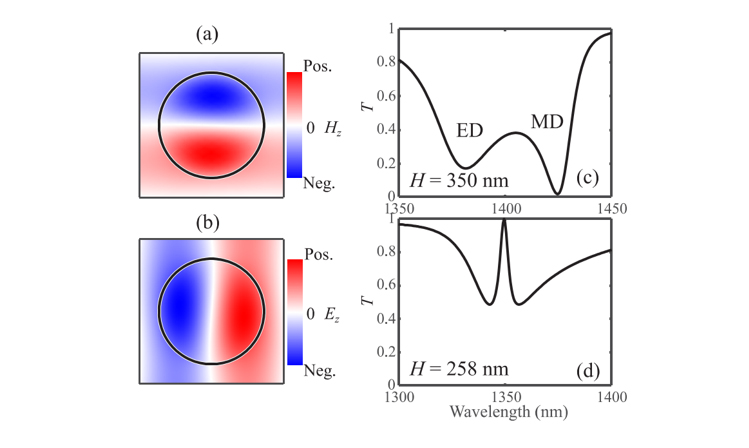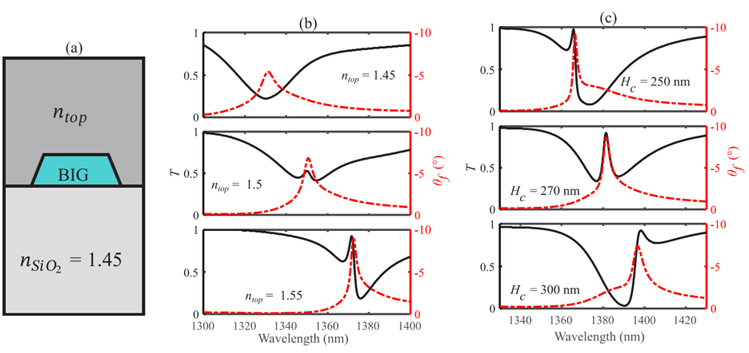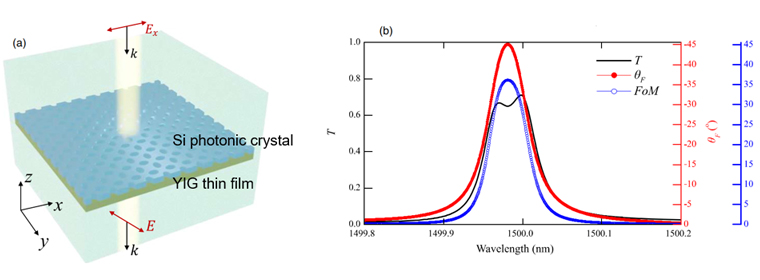Research outcomes of the Program for the Advancement of Next Generation Research Projects
Faculty of Science and Technology
Yasutomo Ota
Magneto-optical (MO) effects are one of the key ingredients for building advanced photonic devices including highly functional optical integrated circuits. MO Faraday rotation and nonreciprocal phase shift enable the rectification of optical signals, which is indispensable for suppressing crosstalk among optical communication channels and for stable operation of the system.
In the technologically important telecommunication wavelengths at room temperature, yttrium iron garnets (YIGs) and their mineral group are a leading transparent MO material and single crystals of them have been widely used for commercial applications as optical isolators and circulators in bulky optics setups. However, nanophotonic devices based on YIG have not fully been studied. One obstacle to this direction is the lack of proper microfabrication technology for YIGs, which is notoriously intractable to nanopatterning. Another issue is weak or moderate MO interactions found in YIG, which requires long interaction lengths for the operation and hence makes the devices large. In this project, we numerically investigated optical structures that significantly enhance MO integrations for developing ultracompact Faraday rotators.
Figure 1 shows a schematic of a MO metasurface structure studied in this project. A two-dimensional array of YIG nanodisks is suspended in glass1,2. In our study,bismuth iron garnet (BIG) is considered as a material for the nanodisks. We assume vertical illumination of the structure with narrow frequency band laser light, which is trapped in the structure, undergoes MO interactions therein and exits downward with a polarization rotation (Faraday rotation) of θ. We analyzed this Faraday rotation using the finite element method that directly solves the Helmholtz equation under a periodic boundary condition.

Figure 1:
MO metasurface investigated in this study
©Keio University
Figure 2 shows a summary of optical responses of the structure. Figure 2 (a) and Figure 2 (b) display optical field distributions of the modes considered here, which are based on the electric and magnetic dipole (ED and MD) resonances in each BIG disk. Figure 3 (c) and Figure 3 (d) show light transmission spectra computed for different heights (H) of the disks. For H = 350 nm, we observe two resonances associated with the ED and MD modes. The spectrum exhibits transmission dips at the resonances, which are detrimental to the transmission-based optical device. Thus, we tuned the thickness to H = 258 nm and converted the dips into a peak through electromagnetically induced transparency (EIT), as demonstrated in Figure 2(d). The EIT phenomenon can be understood as a path interference effect that cancels out back reflection. We found that Faraday rotation angle θ is significantly enhanced at the EIT resonance and reaches ~7.6 degree. The large rotation angle in the very thin (~ a few hundred nanometers) garnet layer is a key result for downsizing optical isolators1,2.

Figure 2:
Optical response of the MO metasurface
© Keio University
Next, we examined a situation with fabrication imperfections in the YIG nanodisks. We considered nonvertical sidewalls (see Figure 3 (a)), which degrade the quality of optical resonances and thereby the operation of the Faraday rotator. To recover the optical response, we propose to apply asymmetric cladding to the structure by covering the nanodisks with higher refractive index glass. Figure 3 (b) shows an evolution of the optical responses with varying the refractive index of the top clad (ntop) for the structure with sidewalls tilted by 10 degrees. One can see the recovery of the EIT peak when increasing ntop. The full EIT peak is recovered by further tuning the height of the disk Hc as shown in Figure 3 (c). Faraday rotation angle spectra shown in dashed red lines also exhibit a clear improvement with larger ntop. The proposed technique to overcome fabrication imperfections will facilitate the experimental realization of the ultracompact optical isolators [2].

Figure 3:
Effect of asymmetric top cladding
© Keio University
We have also examined another structure for ultracompact optical isolators3 as shown in Figure 4(a). Here we consider a structure that places a silicon-based photonic crystal on a plain YIG thin film. Now, the optical resonance responsible for enhancing Faraday rotation is predominantly supported in the silicon structure. Figure 4(b) shows a summary of the optical properties of the designed structure, exhibiting a sharp resonance accompanying a large enhancement of Faraday rotation up to 45 degrees. The advantage of the proposed structure lies in the capability of faithful fabrication, which avoids direct nanopatterning of YIG and only requires matured lithography processes for silicon.

Figure 4:
Figure 4 MO metasurface based on a Si photonic crystal on YIG
© Keio University
In summary, we have investigated photonic nanostructures based on YIG as an initial step for the exploration of magneto nanophotonics. We demonstrated that employing optical resonances is a key to downsizing MO devices. We believe that the proposed MO devices can be realized experimentally by developing proper nanofabrication technology for YIG.
Reference
- A. Christofi, Y. Kawaguchi, A. Alù, and A. B. Khanikaev, Opt. Lett. 43, 1838 (2018).
- S. Gao, Y. Ota, F. Tian, T. Liu, and S. Iwamoto, Opt. Express 31, 13672 (2023).
- S. Gao, Y. Ota, T. Liu, F. Tian and S. Iwamoto, Appl. Phys. Express 16 072003 (2023).
Keio University Program for the Advancement of Next Generation Research Projects
The Keio University Program for the Advancement of Next Generation Research Projects subsidizes research costs with the aim of finding solutions to challenges and of promoting global academic research in order to allow Keio University faculty members to establish a presence as core researchers.